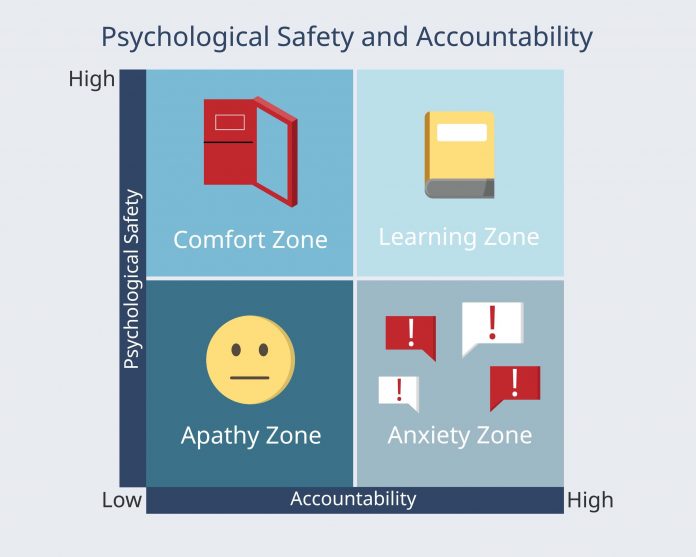
People don’t learn, grow, or engage well when scared. Fear trumps rational and logical thinking. Employees consumed by fear have less capacity to learn new things, develop fresh ideas, and contribute to positive organizational outcomes.
The origin of fear is a lack of safety, physical or psychological. Psychological work-related fears are always looming. A pandemic, an uncertain economy, and lack of job security create the right conditions for stress and fear at work. Work-related fears are a silent danger to employee health, well-being, and the business bottom line without the visual warning of an overcome canary.
In LiveCareer’s latest Fears and Phobias at Work study, 81 percent of respondents confessed that their fears and phobias have adversely affected their job. Relentless work-related worries stand in the way of professional development and negatively impact relationships with managers and co-workers, not to mention decreased motivation and overall engagement.
Employee Engagement Is Crucial
Employee engagement is essential to the success of any organization. Engaged employees can learn, grow, and contribute positively to their organization only when they feel safe enough to do so. By their very nature, engaged employees are the cornerstone of any thriving organization. They are more productive, less likely to leave their organization, and will more conceivably recommend their company to others.
However, current data trends paint a concerning picture. In 2021, according to a Gallup study, employee engagement in the U.S. dropped from 36 percent to 34 percent. This downward trend continued into 2022, with just 32 percent of employees feeling engaged.
What does this mean for Learning and Development (L&D) professionals and developing talent in the workplace? It means where there is fear, L&D faces an uphill battle with human biology. When distracted and disturbed by fear, the human mind is less like a sponge and more like a sieve. The brain’s amygdala enacts the fight-flight-freeze response. Focus narrows. Rational and logical thinking goes offline. And survival becomes the #1 priority.
The Threat Detector
We all have an internal threat detection device called the amygdala. It is one of the most primitive parts of the human brain, and it constantly scans our environment to assess our level of safety and alert us to any signs of trouble. It was instrumental in prehistoric times when physical danger loomed large most of the time.
In the Information Age, our survival depends more on our ability to think than physically respond. However, the amygdala lacks a sense of time or knowledge to distinguish between real or perceived threats.
We have to learn to work with our natural threat detector. This requires tuning into the body. Our bodies speak to us way more than we realize. The body’s language is physical sensations. Most people recognize less than .01 percent of their sensory data. This lack of awareness leads to overreactions, undue stress, and constrained performance.
Performance Still Matters in an Uncertain Economy
Leaders and L&D professionals who bridge the gap between mind and body will turn the tide on developing talent in the workplace and sustaining employee engagement by virtue of psychological safety.
Emotions are contagious. The more people recognize their sensory data, the better equipped they are to manage their natural fight-flight-freeze response and persist with a high level of performance. Not every uncomfortable situation is unsafe. Recognizing the difference wards off unpredictable, knee-jerk reactions that derail productivity, put people on alert, and erode safe pockets to communicate.
Consider that Gallup’s employee engagement data puts “clarity of expectations” at the top of the list of elements of engagement that have declined the most from the pre-pandemic record-high engagement ratio in 2019 to 2022.
Clear expectations are the most foundational of all engagement elements. Employees can only fully engage or perform at high levels when they know what to do. And if they don’t feel safe speaking up to voice their concerns or ask questions, they won’t. They will go into a confused, self-preserve mode instead.
Fear Is What We Have to Fear
In the words of Franklin D. Roosevelt, “The only thing we have to fear is fear itself.” That thought is as real today in the uncertain times we live in as it was in the depths of the Great Depression.
Developing talent and sustaining employee engagement hinges on creating psychological safety in the workplace. Work-related fears can creep up at any moment and negatively affect even the most confident. Setting the stage starts with the people in charge managing their sense of safety.
The key is to notice sensory data early, name what you’re feeling, and neutralize your nervous system with coping mechanisms that don’t interfere with your ability, or the ability of others, to thrive at work.
For example, it is being aware enough to notice a rapid heart rate in conjunction with a difficult conversation, acknowledging that you’re orienting toward a threat, and dimming the fight-flight-freeze response by silently asking yourself if the situation is unsafe or uncomfortable.
For many people, distinguishing between unsafe and uncomfortable is enough to sustain their rational and logical thinking with the best intentions intact.
In sum, leaders and L&D professionals who lead themselves first in psychological safety—resulting in being more approachable and accessible to others—can do much to establish and enhance learning, innovation, and growth in the workplace.




